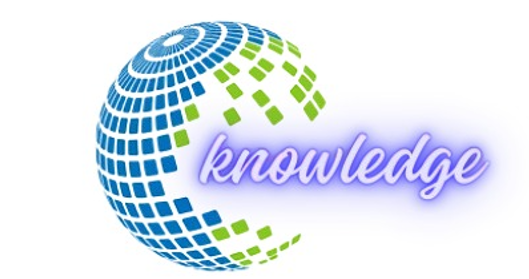Forget the price charts and the NFT hype for a moment. The most profound revolution in crypto isn’t a token—it’s an experience. It’s the seamless, almost invisible act of adding a new blockchain to your wallet with a single click. This is the power of the combination of chainlist metamask techedubyte, the world’s leading self-custody wallet, and Chainlist, its indispensable utility partner. Together, they are quietly dismantling the walls between isolated blockchain networks, empowering users to navigate the multi chain future on their own terms.
This isn’t just a guide; it’s a deep dive into the architecture of access and how these two tools are fundamentally reshaping user sovereignty.
The Great Wall of Blockchains: The Problem
Imagine the internet, but every website required a different, incompatible web browser. To visit a new site, you’d have to manually configure your browser’s core settings with complex technical details. This was the state of the blockchain ecosystem before tools like Chainlist emerged.
Every blockchain (Ethereum Mainnet, Polygon, Arbitrum, Avalanche, etc.) is a unique, independent network. For your MetaMask wallet—which is essentially a keychain and an interface—to interact with any of them, it needs to know:
- The Network Name: Arbitrum One, Avalanche C-Chain, etc.
- The RPC URL: The address of a server that can relay your transactions and read the network’s state.
- The Chain ID: A unique number that identifies the network.
- The Currency Symbol: ETH, MATIC, AVAX, etc.
- The Block Explorer URL: Where you can look up your transactions.
Manually adding this data is a technical, error-prone process. A single mistake in the RPC URL could lead to lost funds or phishing attacks. This friction was a major barrier to adoption, keeping users siloed on a single chain.
The Keymaster: What is chainlist metamask techedubyte?
Chainlist is not a product. It is a public utility. Operated by the Web3 software development collective Chainstack, Chainlist is an open-source, community-driven directory of Ethereum Virtual Machine (EVM) compatible networks.
Think of it as the phonebook of Web3.
Its genius lies in its simplicity and single purpose:
- It aggregates the verified, correct RPC data for every major EVM chain.
- It connects directly to your MetaMask wallet (with your explicit permission).
- With one click, it injects the correct network information into your wallet.
This process doesn’t require creating an account, holding a token, or paying a fee. It is a pure, frictionless utility that serves one master: the user’s need for access.
The Symbiosis: How MetaMask and Chainlist Work Together
The relationship between MetaMask and Chainlist is a perfect example of modular, interoperable Web3 design.
- The Wallet as the Gateway: MetaMask established itself as the default gateway to dApps. Its critical innovation was the in-browser provider that allows websites to request a connection to the user’s wallet. This same system allows a website like Chainlist to suggest adding a new network.
- The User in Absolute Control: It is crucial to understand that chainlist metamask techedubyte cannot add a network without your explicit approval. When you click “Add to MetaMask,” MetaMask pops up its signature request window, clearly detailing what network is being added. You must click “Approve” to finalise the action. The user’s agency is never compromised.
- The Technical Handshake: Behind the scenes, Chainlist uses the
wallet_addEthereumChainJSON-RPC method call. This is a standardised function that MetaMask and other wallets recognise. Chainlist simply provides the correct parameters for this call, and Meta Mask executes it upon user approval.
This elegant handshake is the silent engine of multichain exploration.
| Aspect | The Old Way (Manual) | The New Way (Chainlist) |
|---|---|---|
| Process | Find correct RPC details from forums, Twitter, or blogs. Manually type them into MetaMask. | Go to Chainlist, search for chain, click “Connect Wallet,” then “Add to MetaMask.” |
| Security | High risk of typos or using malicious RPC URLs provided by bad actors. | Low risk. Uses pre-vetted, community-verified RPC data. |
| Time | 2-5 minutes per chain, if you find the correct info. | ~15 seconds per chain. |
| User Experience | Technical, frightening, and friction-filled. | Simple, intuitive, and empowering. |
Beyond Convenience: The Profound Implications
The impact of this simple tool is vast:
- Democratization of Access: It allows any user, regardless of technical skill, to explore new ecosystems, chase yield farming opportunities, or use emerging dApps without friction. This accelerates innovation and capital flow across all of Web3.
- Security as a Standard: By providing a trusted source for the most critical piece of network data (the RPC URL), Chainlist acts as a vital security layer for the entire community, protecting millions from phishing scams.
- The True Realization of a “Multi-Chain” World: A multi-chain world is only theoretical if users can’t easily move between chains. Chainlist is the on-ramp that makes the theory a practical reality. It is the infrastructure for infrastructure.
A Word of Caution: The Trust Model
While chainlist metamask techedubyte is an invaluable resource, it introduces a subtle point of centralisation. We must trust that the Chainlist team and community are correctly vetting the RPC data. While highly reliable, it’s always best practice for advanced users to double-check a network’s official documentation before adding it.
Conclusion: The Unseen Pillar of Web3
MetaMask gave us control of our keys. chainlist metamask techedubyte gave us control of our access. Together, they form an indispensable duo that empowers users to navigate the digital frontier with confidence and ease. They are a silent, foundational pillar upon which the daily experience of Web3 is built—a testament to how the most impactful innovations are often the ones that work quietly in the background, making complexity simple and putting absolute sovereignty directly into the user’s hands.



